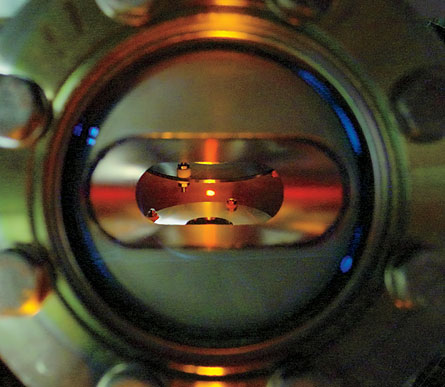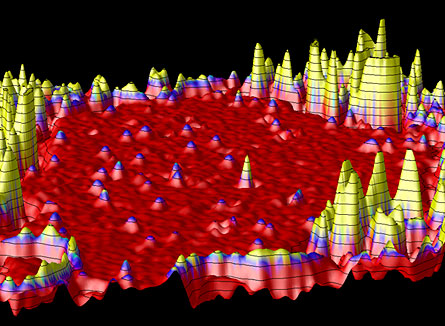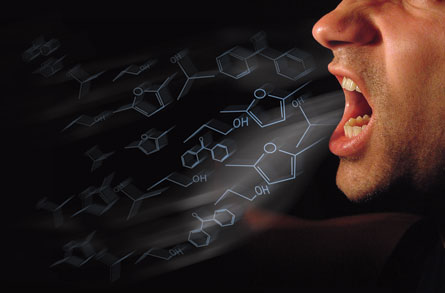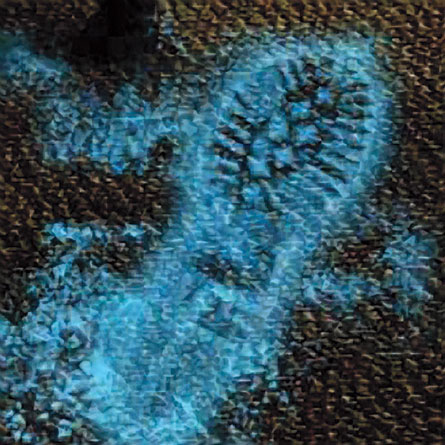
Physicists slow, cool jittering molecules
Laser’s tickle unlocks ultracold realms
By using precisely tuned lasers, physicists have nearly stopped molecules cold (SN: 12/20/08, p. 22). Usually molecules zip, spin and quiver with frenetic motion, giving structure and physical properties to nearly everything that exists. But by curbing molecules’ internal and external motions, researchers hope to explore ultracold chemistry, quantum computing and even exotic forms of matter.
“This is the breakthrough,” says Matthias Weidemüller, a physicist who was formerly at the University of Freiburg in Germany and whose group recently made ultracold lithium-cesium molecules. Another team, including Jun Ye of the University of Colorado at Boulder, succeeded in making ultracold molecules of potassium-rubidium. Both teams used lasers to join two ultracold atoms.
Researchers can now create slow-moving specimens to poke and prod, enabling experiments that would be impossible with everyday hot molecules.
“It’s really a new frontier,” says Wolfgang Ketterle, a physicist from MIT who shared the physics Nobel Prize in 2001 for pioneering research on ultracold atoms.

Pretty darn small Electron microscopes image single atoms of hydrogen (SN: 8/16/08, p. 7).
No babies, no hormones Researchers infuse mouse cells grown in the lab with small, customized RNA molecules that could eventually serve as a hormone-free contraceptive (SN: 7/5/08, p. 9).
R.I.P. nanobacteria Objects once thought to be submicroscopic bacteria turn out to be balls of protein and calcium carbonate, but scientists continue to investigate the nanoscale spheres’ link to disease (SN: 5/10/08, p. 5).

Breath catching The molecules present in exhaled breath could serve as markers for a wide variety of diseases and reveal exposure to pollutants, studies show (SN: 7/5/08, p. 5).
Striking Alzheimer’s core By finding a way to stick an enzyme-inhibiting molecule to a cell’s membrane, scientists may have devised a new framework for an Alzheimer’s drug (SN: 5/24/08, p. 9).
Quantum difference A study of heavy water suggests that quantum effects on bond length (shown below) could explain some of ordinary water’s unusual physical properties (SN: 8/16/08, p. 7).
It’s DNA, Jim Chemists synthesize a DNA-like molecule using artificial versions of the letters that make up the genetic code (SN: 8/2/08, p. 15).

Simple blood removal Household “oxy” cleaners remove blood almost too well, which could prevent forensic investigators from finding the clues that usually show up in routine tests, such as the luminol test above (SN: 12/6/08, p. 12).
Life before proteins The first living cells could have acquired nutrients through membranes made of fat molecules that were different from those in modern cell membranes, researchers suggest (SN: 7/5/08, p. 12).






